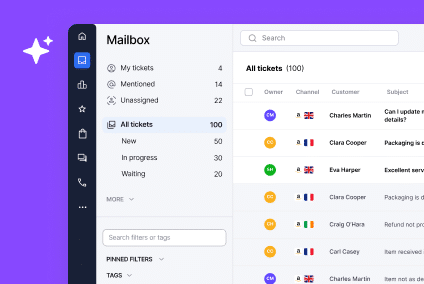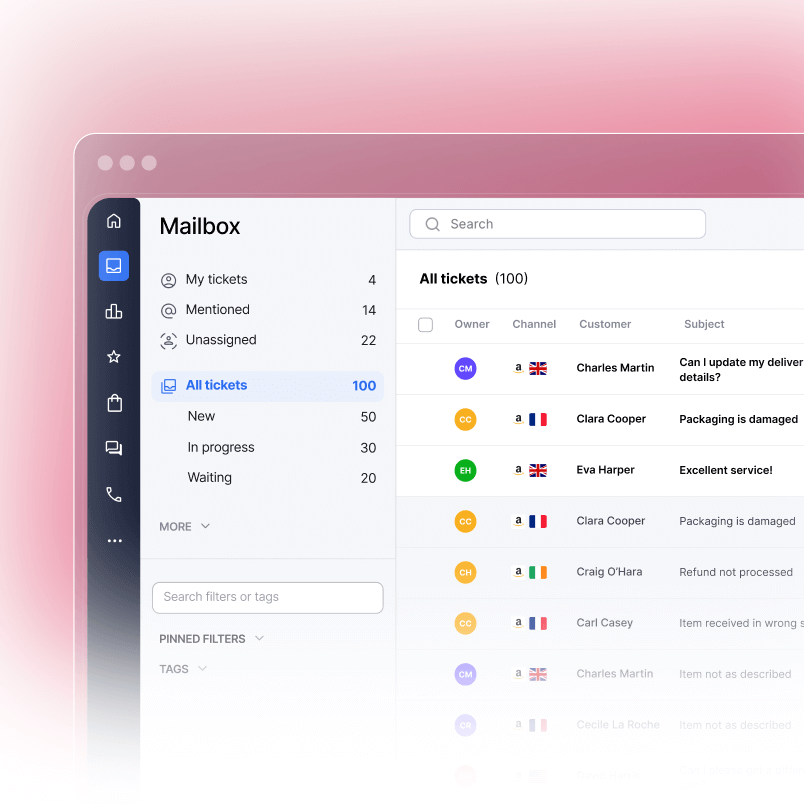If you sell on Amazon, you already know that success is measured not only by how much you sell but also by how much you keep. Profitability is where the real challenge begins, and 2025 is proving to be even more difficult. With Amazon seller fee updates, shifting FBA storage charges, and higher customer acquisition costs, now is the time to be more strategic than ever.
Luckily for you, that’s where the Amazon revenue calculator comes in. In this blog, we’ll show you how to take full control of your numbers, whether you’re using Amazon’s built-in tools or an advanced FBA calculator. From what to enter to which tools to try and how to avoid common forecasting errors, we’ll give you the knowledge you need to boost your profits this year and beyond.
Why Do I Need a Revenue Calculator?
We understand that when you’re launching a product, optimizing a listing, or scaling a bestseller, crunching numbers isn’t the first thing that comes to mind. But here’s the truth: one of the most common (and costly) mistakes made by Amazon sellers is failing to calculate their profits correctly.
With margins getting tighter, fees rising, and returns potentially tanking your profitability overnight, a revenue calculator helps you:
- Calculate your true profit per unit after all costs.
- Identify products that are losing money, even if they are best sellers.
- Make clear pricing and advertising decisions.
- Plan restocks, bundles, and discounts without reducing your margins.
So, whether you’re new to the game or manage a large number of SKUs, accurate forecasting is essential.
What Does an Amazon Revenue Calculator Do?
An Amazon calculator takes into account all of your product’s costs and calculates your expected net profit. That means it includes everything Amazon deducts along the way, not just revenue.
Here’s what’s typically included:
| Input | Why it matters |
| Sale price | Your gross revenue per unit |
| Cost of Goods Sold (COGS) | Your landed cost – product, packaging, duty, shipping |
| Amazon referral fee | Usually 8–15%, varies by category |
| FBA fulfilment fees | Based on size, weight, and product type |
| Monthly storage fees | Charges for warehouse space (per cubic foot) |
| Aged inventory fees | Kicks in after 271+ days in Amazon’s warehouse |
| Return processing fees | Applied for customer returns (especially in apparel and electronics) |
| Advertising spend (TACoS) | Total ad cost as a percentage of total sales |
| Prep/label fees | If you’re not prepping your items yourself |
The best tools extract this data directly from your Seller Central account, resulting in fewer errors and faster analysis. Even if you’re manually inputting everything, understanding how it all works together gives you a significant advantage …it’s a no-brainer.
How Do I Use Amazon’s Free FBA Revenue Calculator?
If you’re new to this, Amazon’s FBA revenue calculator is a good place to start. It’s free, simple, and available online with no login required.
Here’s how to use it:
- Go to the Amazon Revenue Calculator (available in most regions).
- Type in your ASIN or product keyword.
- Choose your fulfillment method: FBA or FBM.
- Add your product price and cost per unit.
- Include extra costs such as preparation, returns, and advertising (this is optional).
- Click “Calculate” to view your total fees, net margin, and per-unit profit.
And that’s it – Amazon’s calculator is ideal for quick checks. Even though it doesn’t save data, run comparisons, or project long-term growth, it’s a solid first step for single-SKU sellers.
What Data Should You Collect First?
Your revenue calculator is only as accurate as the data you put into it. Here’s what you should keep on hand:
- Your COGS (product price + shipping + duties + insurance + packaging)
- Current selling price (including promotions or discounts)
- Average ad spend per unit sold (based on your Amazon Ads or third-party dashboard)
- Amazon seller fees and FBA fulfillment charges (which vary depending on size and category)
- Average return rate (based on the past 30-90 days)
- Average inventory age (estimating storage and long-term fees)
You can use Amazon Business Reports to look up historical return rates and ad performance. The more data you have, the better your predictions will be.
Best Amazon Revenue Calculators in 2025
Not every calculator is the same. Some are quick and simple, while others are more complex. Here’s a list of the top ones to try this year:
| Tool | Best for | Features |
| Amazon FBA Calculator | All sellers | Quick, official, free |
| Helium 10 Profitability Calculator | Private label sellers | Chrome extension, multi-market support, PPC integration |
| AMZScout FBA Calculator | Global sellers | Preloaded with 2025 fee tables for major marketplaces |
| Seller Assistant App | Arbitrage/wholesale | Includes FBM costs, sales tax estimates, and UK VAT |
| Jungle Scout Calculator | Product researchers | Built into their product database |
| eDesk + Profit Analytics | Scaling support teams | Real-time profit alerts, returns tracking, and message-linked SKUs |
When should you consider upgrading? If you manage more than 20 SKUs, spend on ads, or handle large-scale returns, you should consider investing in a calculator with forecasting and integration capabilities to give you the best predictions.
Common Mistakes to Avoid
Even if all that seems straightforward, there are some common mistakes even seasoned Amazon sellers can fall into. Here are some simple solutions to stay ahead of the game:
Mistake #1: Ignoring refunds and returns
Solution: In your calculator, enter a weighted return rate (e.g., 5-10% for electronics).
Mistake #2: Neglecting ad spend
Solution: Include your TACoS (Total Ad Cost of Sale) to determine your true margin after ads.
Mistake #3: Using outdated fee tables.
Solution: Check for any 2025 changes to referral fees, fulfillment charges, and storage rates.
Mistake #4: Guessing costs
Solution: Extract real data from invoices, customs forms, and carrier bills; guessing reduces accuracy.
Mistake #5: Using just one calculator.
Solution: Check your numbers with at least two different tools to look for inconsistencies.
Advanced Techniques for Better Forecasting
So you’ve learned the fundamentals; ready to take your revenue planning to the next level? Here are some top tips to help you do just that:
- Run price simulations: What happens to your margin if you lower the price by £1? Or increase it by 10%?
- Consider PPC growth: Estimate a 10-20% increase in cost-per-click year over year.
- Test bundles or multi-packs: Combine SKUs to lower per-unit shipping and storage expenses.
- Check seasonal storage fees: Q4 is pricey. Plan to turn inventory faster in October and December.
- Use eDesk to track high-cost SKUs. Link profit data to support tickets so you can identify products that are causing returns or complaints.
Bringing Everything Together with eDesk
You probably already use eDesk to manage your Amazon messages, reviews, and tickets. But eDesk gets more powerful when you combine product profitability with support metrics. Not only can you see which SKUs are profitable, but also which are incurring hidden costs due to returns, customer complaints, or delivery issues.
When combined with smart inbox tagging and agent insights, your entire business – from profit to performance – functions seamlessly. No spreadsheets. No switching tabs. Just clarity.
Ready to Confidently Predict Your Profits?
Knowing your margins is critical when launching a new product or expanding into international markets. And, with the right Amazon FBA calculator and smart forecasting tools, you can confidently plan your next step.
Want to learn how eDesk can help you grow while increasing margins and customer satisfaction? Schedule your free demo today.




